
The 5 Most Common Types of Low Back Pain
What is idiopathic low back pain anyway?
In most medical offices, low back pain is referred to as "idiopathic" low back pain. Meaning the medical provider doesn't really understand the cause of the low back pain, and oftentimes consider it "unknowable." The problem is that there are a lot of different conditions that people generally refer to as "Low Back Pain (LBP)". We're going to take a moment to discuss the 5 most common conditions we see at our office that people refer to as "LBP."
Disc Herniation
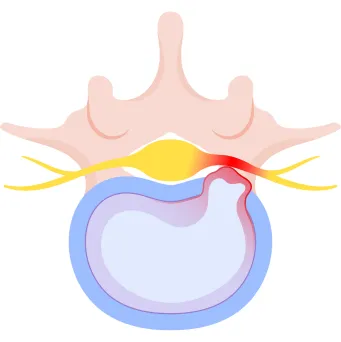
Of the 5 we discuss today this is the one people seem to talk about the most, but we tend to see the least. Frequently referred to as a “blown,” or “slipped” disc is just as it's described. One of the discs; between the vertebrae, bulges or bursts putting pressure on the nerve as it exits the spine. This most commonly happens at the junction between L5; the lowest vertebra and the S1; the top of the sacrum. Usually this is the result of some sort of trauma, like lifting something too heavy, getting in a motor vehicle accident, or having something fall on you. It will cause a sharp pain that will feel like a live-wire; a sharp, electrical pain that shoots down your leg, typically to your toes.
Iliotibial Band (IT Band) Syndrome:
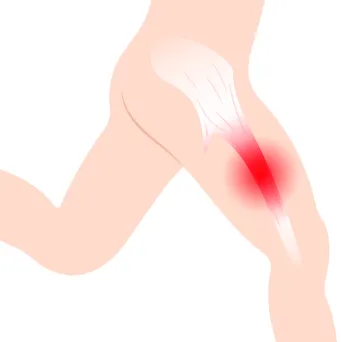
This is actually more of a leg pain that usually initially presents with knee and/or hip pain, but people will oftentimes mistake it for "Sciatica," which is a more generalized term and it frequently happens in concurrence with other types of low back pain. IT band hypertonicity starts on the outside of the leg, just above the hip and creates an achy, tight, stiff, cramping-like pain that travels down your hip to just below the outside of your knee. Sometimes this condition can also cause an entrapment of the nerve that goes down the front of your shins.
Piriformis Syndrome
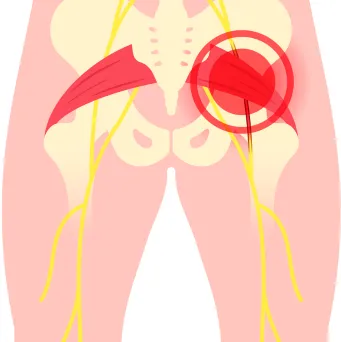
Probably the most common cause of sciatic pain in my experience. It starts in the lowest part of the back, across the buttocks or hips, and usually radiates with a creeping/cramping kind of pain into the buttocks or upper thigh, rarely the pain can radiate past the knee and even all the way down to the foot if it has been going on long enough. Some people can also get piriformis syndrome without the pain radiating into their legs, although it is less common.
Facet Syndrome:
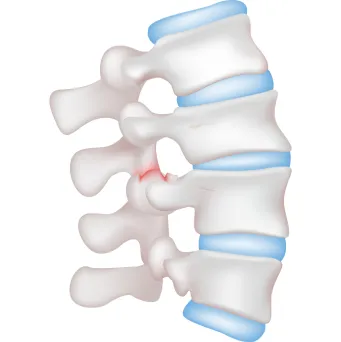
The facet joints are the joints on the back of the spinal vertebrae and are some of the most sensitive joints in the body. Unlike the vertebral body, the facets are used less for support and more to feed information about the position and movement of the body to the brain. Facet syndrome is one of the most common types of debilitating low back pain. It is normally a pin-point, severe, sharp and stabbing pain in the lower back, between the ribs and the sacrum. Facet syndrome is often made worse by arching (leaning backwards) or leaning toward the side of pain. Facet syndrome can also cause cramping in or around the musculature surrounding the site of the pinched facet joint.
Iliopsoas (hip flexor) spasm:
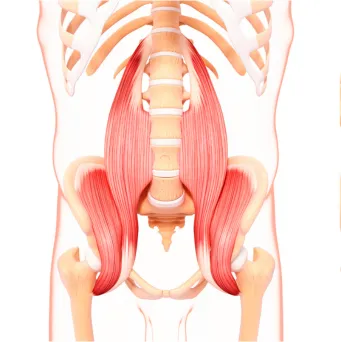
The iliopsoas, or hip flexors, are a pair of muscles that come off the front of the lower spine and the wings of the pelvis, then wrap down into the inner thigh. This is the most common cause of dull achy low back pain. Although the hip flexors come off the front of the spine, they are much closer to the back of the body, and are therefore felt as low back pain. Most of the time IT Band, piriformis, and facet syndrome are secondary to hip flexor spasm. Hip flexor spasm can also result in anterior leg or groin pain.
Low back pain can be complicated because you can have some, or all of these at the same time. In fact, untreated hip flexor spasm will often lead to one, or all, of the other types of low back pain to occur. Each of these types of low back pain require different treatment plans and different types of rehabilitation, so a thorough exam with a well informed practitioner is necessary, especially if the pain has been going on for more than a month.
Call Colley Avenue Chiropractic and Bodyworks to set up your appointment today at (757) 627-3657!

Explore
On Social
colleyavechiro.com - All Rights Reserved - Terms & Conditions